La Palma
Are you looking for a unique island getaway with great weather year-round and a deep connection to nature? Look no further than La Palma, part of the stunning Canary Islands in the heart of the Atlantic Ocean. Known as “La Isla Bonita”, this enchanting island offers an incredible variety of landscapes: from dramatic volcanoes and mystical laurel forests to pristine black sand beaches and serene natural pools.
Designated a UNESCO Biosphere Reserve, La Palma is a paradise for nature lovers and outdoor enthusiasts, boasting some of the most captivating hiking trails in the Canary Islands. To truly experience its charm, plan to spend at least a week exploring the island at your own pace, ideally with a rental car.
Getting to La Palma is easy, thanks to excellent air connections. The island offers direct flights to several European countries, including Germany, the Netherlands, Belgium, England, Sweden, Denmark, and Switzerland. Additionally, there are direct flights from Spanish cities such as Madrid, Barcelona, Bilbao, and Santiago de Compostela, either year-round or seasonally.
If you prefer a scenic sea journey, you can reach La Palma by ferry from Tenerife or La Gomera, making it an accessible and memorable destination for your next adventure.

Where is La Palma Island?
La Palma is part of the Canary Islands, an archipelago located in the Atlantic Ocean. While the Canary Islands are geographically near the northwest coast of Africa, they belong politically to Spain.
Here’s a quick breakdown of where La Palma is located:
- Region: Atlantic Ocean
- Archipelago: Canary Islands (Spain)
- Coordinates: Approximately 28°40′N 17°52′W
- Closest Continent: Africa (about 400 kilometers/250 miles west of Morocco)
- Proximity to Mainland Spain: Around 1,400 kilometers (870 miles) southwest of the Iberian Peninsula
La Palma is one of the westernmost islands in the Canary Islands, and its nearest neighbors are El Hierro and La Gomera.
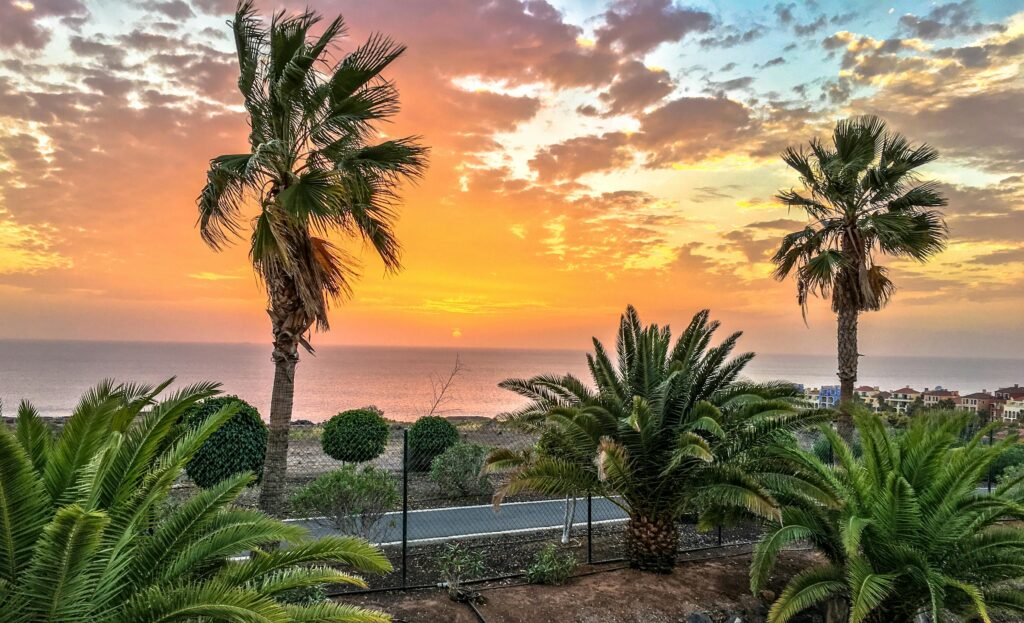
Canary Islands La Palma Volcano
The Cumbre Vieja volcano on La Palma in the Canary Islands is one of the island’s most prominent natural features, known for its dramatic eruption in 2021. This eruption was one of the most significant volcanic events in the history of the Canary Islands and reshaped parts of La Palma, drawing international attention. Here’s everything you need to know:
Cumbre Vieja Volcano
- Location: Southern La Palma, part of the Canary Islands archipelago in the Atlantic Ocean.
- Type: Active shield volcano, part of the volcanic ridge that stretches across the island.
- Significance: It represents La Palma’s volcanic origins and ongoing geological activity, which continues to shape the island’s landscape.
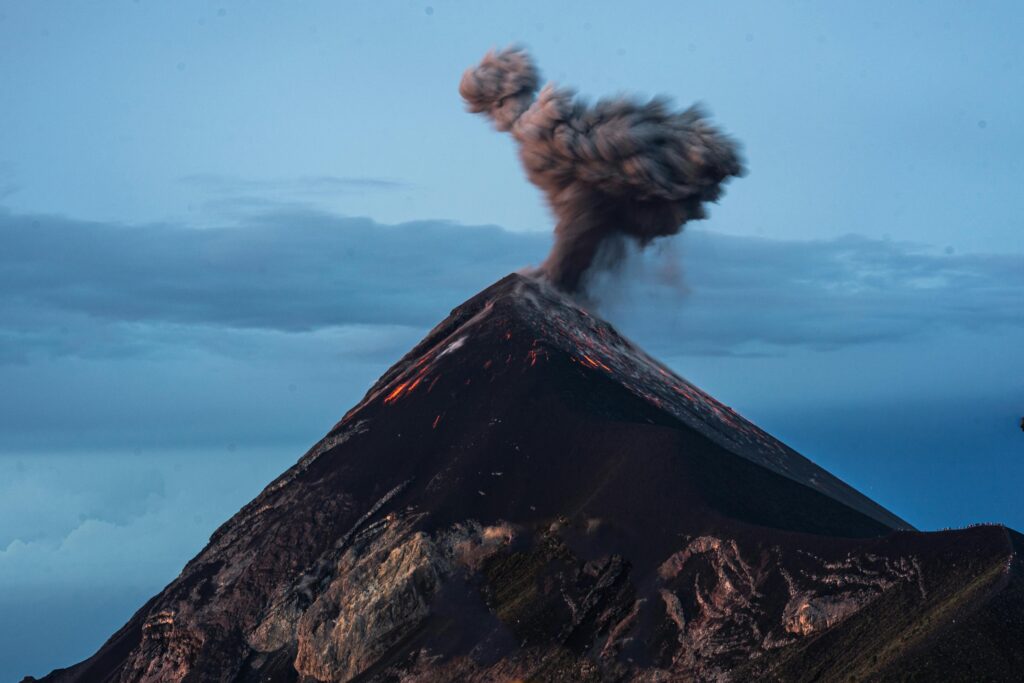
2021 Eruption of Cumbre Vieja
- Start Date: September 19, 2021.
- Duration: 85 days, ending on December 13, 2021.
- Impact:
- Lava Flow: Covered over 1,000 hectares (~2,470 acres) and created new land as the lava reached the Atlantic Ocean.
- Destruction: Thousands of buildings, homes, farms, and infrastructure were destroyed, displacing over 7,000 residents.
- Landscape Change: New volcanic cones and lava deltas have permanently altered the island’s geography.
The eruption was closely monitored by scientists worldwide, making it a significant event in volcanology. It also served as a reminder of the island’s ongoing geological activity.

Visiting the Cumbre Vieja Volcano
While the eruption of Cumbre Vieja Valcano caused significant devastation, the area has become a major point of interest for visitors seeking to learn about the power of nature and witness the newly formed landscapes.
Guided Volcano Tours:
-
- Tour operators now offer safe and informative tours to view the lava fields, craters, and other features formed during the eruption.
- Guided tours often include insights into the island’s volcanic history, the eruption’s effects, and the resilience of the local community.
Volcano Route (Ruta de los Volcanes):
-
- This iconic hiking trail takes you along the volcanic ridge, including older volcanic features on the island. Although some parts of the trail may have been affected by the eruption, many sections remain open, offering breathtaking views of craters, pine forests, and the Atlantic Ocean.
Miradors (Viewpoints):
-
- Visit safe observation points like Mirador de Tajuya, which became famous during the eruption for providing a clear view of the lava flows.
- Other viewpoints, like Llano del Jable, offer a broader perspective of the volcanic terrain.
La Palma Volcano
The La Palma Volcano, specifically the Cumbre Vieja Volcano, made global headlines due to its dramatic eruption in 2021, which was one of the most significant volcanic events in recent history. Located on the southern part of La Palma in the Canary Islands, the volcano has long been a defining feature of the island’s volcanic landscape.
Facts About the Cumbre Vieja Volcano
The 2021 Eruption
- The eruption began on September 19, 2021, and lasted for 85 days, ending on December 13, 2021.
- It was the first eruption on La Palma since 1971 and the most destructive in modern history on the island.
- Over 1,000 hectares (about 2,470 acres) of land were covered in lava, destroying homes, farmland, and infrastructure, while creating new land as the lava reached the ocean.
- The eruption displaced thousands of residents and caused significant economic and environmental impacts.
A Volcanic Hotspot
- La Palma, like the other Canary Islands, was formed by volcanic activity millions of years ago.
- The Cumbre Vieja ridge is one of the most geologically active areas in the Canary Islands, with eruptions recorded every few decades.
New Landscapes
- The 2021 eruption reshaped the southern part of the island, forming new volcanic cones, lava fields, and even extending the coastline with fresh lava deltas.
- These landscapes have since become a significant point of interest for scientists and visitors alike.
Volcano Tourism
- While the eruption caused devastation, it has also brought increased attention to La Palma as a destination for volcanic tourism.
- Visitors can explore the area surrounding Cumbre Vieja, including safe zones established for viewing lava fields and learning about the island’s geological history.
Educational Opportunities
- The eruption highlighted the importance of studying volcanology, as La Palma remains an active volcanic zone. The new landscapes offer a rare chance to see how volcanic activity transforms an environment.
Volcano and Local Resilience
- The people of La Palma have shown incredible resilience in rebuilding after the eruption, with ongoing efforts to restore affected areas and integrate the new landscapes into the island’s identity.
Can you Visit La Palma Volcano?
Yes, you can visit La Palma’s volcanoes, including the areas affected by the recent Cumbre Vieja eruption (2021), but access to the eruption zone is regulated for safety and conservation reasons. Visitors are welcome to explore certain parts of the volcanic landscape, particularly areas where the impact of the eruption can be safely observed, as well as older volcanic sites on the island.
Visiting the Cumbre Vieja Volcano (2021 Eruption Site)
- Safety and Access:
After the eruption ended in December 2021, the affected areas were declared safe to visit with guided tours or in designated zones. However, some parts remain restricted due to unstable terrain, residual gases, or ongoing scientific monitoring. Check with local authorities for the latest updates on accessibility. - Guided Tours:
Several tour operators on La Palma now offer volcano tours to view the new lava fields, craters, and other features formed by the eruption. These tours often include knowledgeable guides who explain the geology, the eruption’s impact, and the island’s recovery. - Highlights of the Eruption Site:
- New volcanic cones and craters formed during the eruption.
- Lava fields that reshaped parts of the island, including newly created coastline as lava entered the sea.
- Insights into the local resilience and recovery efforts in areas like Todoque and Las Manchas, which were heavily affected.
Other Volcanic Sites to Visit on La Palma
Volcano Route (Ruta de los Volcanes):
- This famous hiking trail takes you along the Cumbre Vieja volcanic ridge, offering spectacular views of the island’s volcanic history, pine forests, and craters. It’s one of the most popular trails in the Canary Islands.
- Distance: ~17 km (10.5 miles)
- Difficulty: Moderate to challenging
Teneguía Volcano (1971 Eruption):
- Located near Fuencaliente, this is La Palma’s second most famous volcano, which erupted in 1971. You can hike to the volcanic cone and enjoy panoramic views of the surrounding landscape and the ocean.
- Nearby, visit the Fuencaliente Salt Pans and natural pools for a relaxing end to your hike.
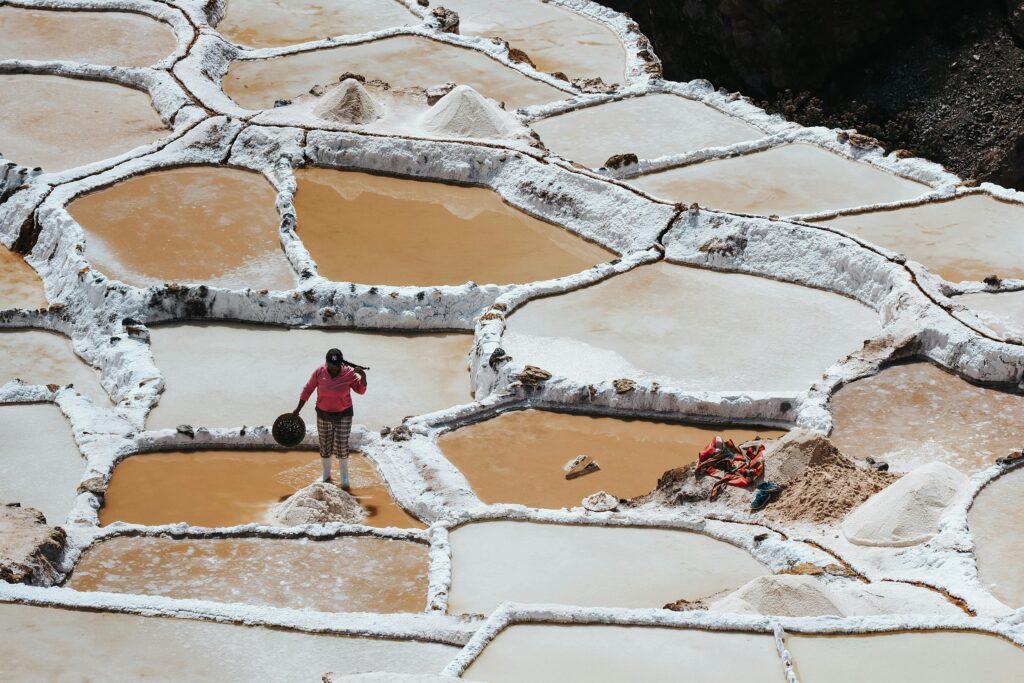
Caldera de Taburiente National Park:
- While not an active volcanic zone, this massive erosion crater is a must-see for its breathtaking landscapes, waterfalls, and hiking trails. It showcases the island’s ancient volcanic origins.
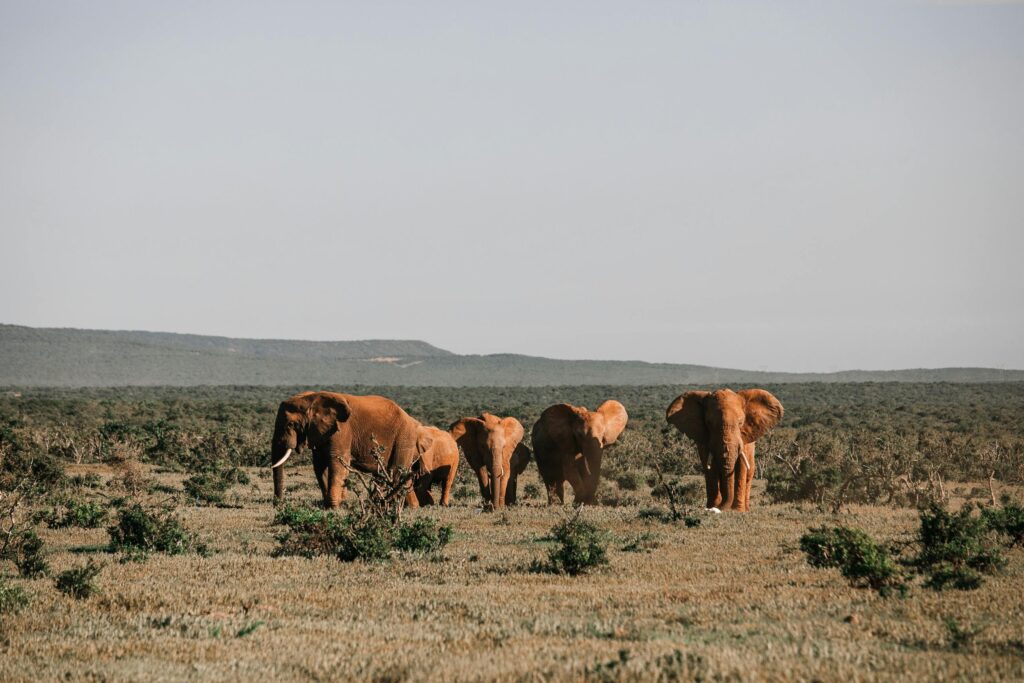
Best Ways to Explore
- By Car: Renting a car allows you to explore the island at your own pace, including driving to observation points like Mirador de La Cumbrecita or Mirador Astronómico del Llano del Jable.
- Hiking: La Palma is a hiker’s paradise, and many trails incorporate volcanic scenery.
- Guided Tours: For the safest and most informative experience, join a guided volcano tour that provides insights into the island’s geology and history.
Important Tips for Visiting
- Wear sturdy shoes, sunscreen, and bring water for hiking or walking on lava fields.
- Respect restricted areas to avoid hazards such as unstable terrain or volcanic gases.
- Support local communities recovering from the eruption by visiting local restaurants, shops, and cultural sites.
Top Visiting Places of La Palma
Volcanic Landscape
La Palma is a volcanic island with dramatic scenery, including the recent eruption of the Cumbre Vieja Volcano in 2021, which reshaped parts of the island. The volcanic terrain offers a fascinating mix of new lava fields and lush forests.
Stargazing Capital
The island has some of the clearest skies in the world, making it a top spot for astronomy. The Roque de los Muchachos Observatory, one of the world’s most important observatories, is located here.
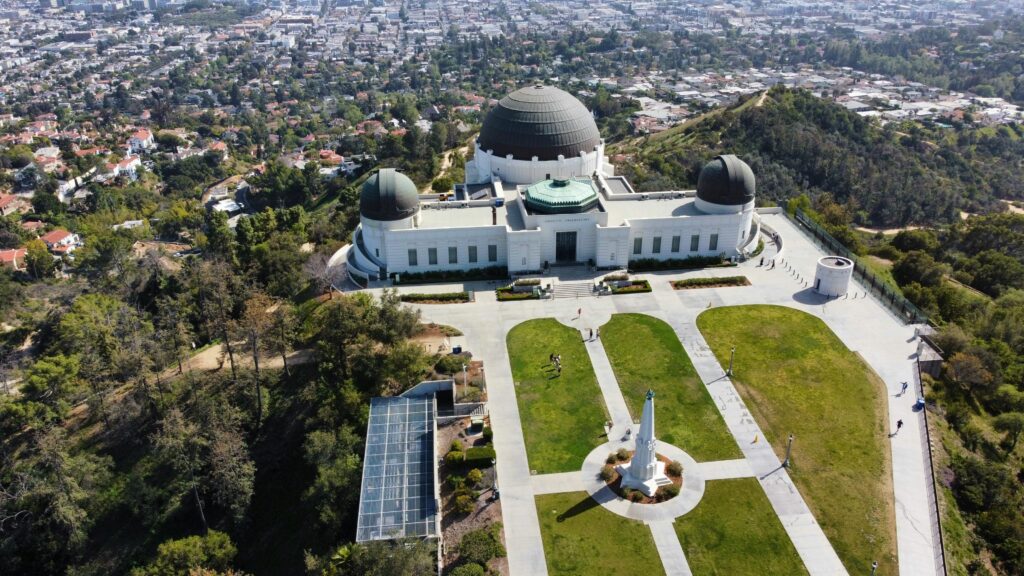
Hiking Trails
La Palma boasts over 1,000 kilometers of marked hiking trails. Popular routes include:
Ruta de los Volcanes: A challenging hike through volcanic landscapes.
Caldera de Taburiente National Park: A stunning crater with lush forests, waterfalls, and breathtaking views.
Black Sand Beaches
Unique volcanic beaches like Puerto Naos, Playa de Tazacorte, and Playa Nogales are perfect for relaxing or water activities.
Puerto Naos and Playa de Tazacorte are two of the most popular beach destinations on the island of La Palma, offering stunning coastal beauty, warm climates, and a relaxed atmosphere.
Puerto Naos
- Located on the west coast of La Palma, Puerto Naos is renowned for its black volcanic sand beach, lined with palm trees and beachside restaurants.
- It’s a great spot for sunbathing, swimming, and enjoying breathtaking sunsets over the Atlantic.
- The area is also known for its paragliding activities, making it ideal for adventure seekers.
Playa de Tazacorte
- Situated near the charming town of Tazacorte, this beach is also on La Palma’s sunny west coast and boasts one of the warmest climates on the island.
- It’s a family-friendly destination with calm waters and excellent facilities, including restaurants serving fresh Canarian seafood.
- The nearby Tazacorte Port offers opportunities for boat excursions, including dolphin and whale-watching tours.
Both locations showcase La Palma’s volcanic beauty and provide a perfect mix of relaxation and adventure.
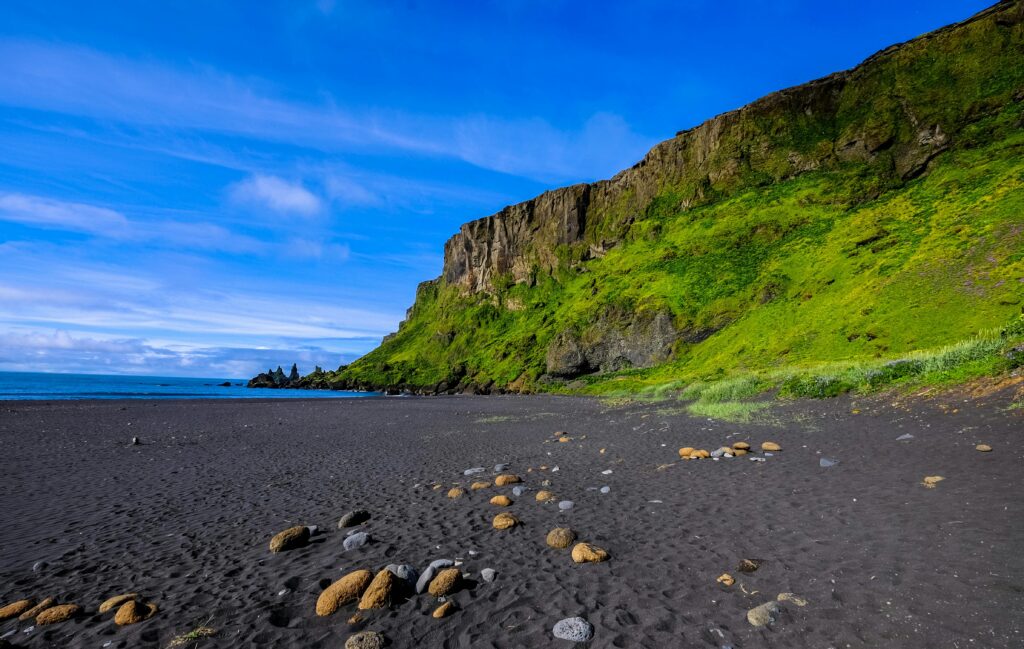
Charming Towns
- Santa Cruz de La Palma: The island’s capital, known for its colorful colonial buildings, cobbled streets, and traditional wooden balconies.
- Los Llanos de Aridane: A lively town on the western side, offering shops, cafes, and local culture.
Adventure Activities
- Paragliding, diving, and cycling are popular ways to explore the island’s rugged beauty.
Local Culture and Food
- Try papas arrugadas (wrinkled potatoes) with mojo sauce, fresh seafood, and bienmesabe, a traditional dessert made with almonds.
- Festivals like Danza de los Enanos (Dance of the Dwarfs) during La Bajada de la Virgen celebrate the island’s unique traditions.
Biosphere Reserve
The entire island is a UNESCO Biosphere Reserve due to its rich biodiversity, including the Canary Island pine forests and endemic species.
La Palma offers a truly unique blend of relaxation and natural beauty. Picture yourself soaking in natural pools surrounded by black volcanic rocks, enjoying a volcanic stone massage, or meditating near breathtaking lava fields. The island’s volcanic history, including the recent Cumbre Vieja eruption, highlights its deep connection to nature and remarkable resilience. Whether you’re seeking wellness, adventure, or a deeper appreciation for Earth’s raw power, La Palma promises an unforgettable experience in a dramatic and serene setting.


